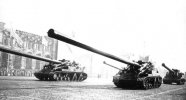Ilmeisesti Kainuun Prikaatin kouluttama sodan ajan prikaati olisi sitten mennyt 155 K98:lla, kun Karjalan ja Porin kouluttamat sodan ajan prikaatit olisivat käyttäneet panssarihaupitseja?24/25 olisi se mitä tykkimiehet tavoittelevat, mutta it vei rahat, kun valinta ja päätös kesti liian pitkään. Lisäksi ev Alasjärvi oli tela-alustaista vastaan.
Install the app
How to install the app on iOS
Follow along with the video below to see how to install our site as a web app on your home screen.
Note: This feature may not be available in some browsers.
You are using an out of date browser. It may not display this or other websites correctly.
You should upgrade or use an alternative browser.
You should upgrade or use an alternative browser.
Resoluutio ei ole hurmaava, ei varsinkaan kun kattoo noita rakennuttuja alueita horisontissa. Silti puikosta TB2sen näkökulmasta. Laittakaa mute päälle.
Shadowmon
Kenraali
Hyvä että on sodanajan prikaatit tiedossaIlmeisesti Kainuun Prikaatin kouluttama sodan ajan prikaati olisi sitten mennyt 155 K98:lla, kun Karjalan ja Porin kouluttamat sodan ajan prikaatit olisivat käyttäneet panssarihaupitseja?



D-30, rivimuodostelma, +20m tykkien väli, ammukset levällään +30m takana, kulo uhkaa asetelmia

vastatykistö löytänyt maalin.

200 - 250 metriä iskemien väli vastatykistötoiminnassa ja uusi iskemä on kaukana halutusta
Tämä on tilanne minkä vuoksi tarvitaan kurssia korjaavaa, >30m CEP, Precision Guidance Kittiä. Vaikka kurmoottavat vihollisen asemia, tyhmän murkulan tarkkuus ei ole tarpeeksi tarkka kohteen ollessa rakennutulla alueella. PGK, säteenseuraaja, taikka joku muu vastaava. Tuolla on varmaan ihmisiä ja heidän elukoitaan jäljellä vaikka onkin otettu haltuun.
Tuossa muodossaanhan sa-jääkäriprikaatien nimet ovat olleet ihan julkista tietoa 90-luvulta saakka. Samoin panssariprikaatien ja jalkaväkiprikaatien aikanaan. Mitä nimeä missäkin tilanteessa olisi käytetty on sitten toinen asia.Hyvä että on sodanajan prikaatit tiedossa

vastatykistö löytänyt maalin.
Onko tuossa neljä vai kahdeksan tykkiä ollut? Nuo oletetut ammuslaatikot on pääasiassa neljän tykin takana. Mutta päätellen noista suuliekin jättämistä laikuista niin tykkejä voisi olla kahdeksan. Eli kaksi olisi tuon tulipalon vasemmalla puolella jotka on epäselviä, lasken sen tulipalon yhdeksi tykiksi, jonka oikealla on ne selkeästi näkyvät kolme tykkiä ja sen jälkeen vielä kaksi epäselvää lisää.
Näyttää hieman siltä, että noiden laitimmaisten tykkien miehistöt olisi keränneet ammuksensa talteen ja lähteneet menemään ja jättäneet nuo keskimmäiset neljä siihen missä ne olivat olleet.
Venäläinen vastatykistö, luultavasti krosnopol vs yksittäinen d-30

MSTA rivistö. Huolto on noin 30 metriä takana, tykit ei näytä käyttävän shoot-and-scoot metodia jälkien perusteella. Tykkien väli on 20 metriä reunoilla, ja 40 metriä aukea keskellä.

Vedettäviä 152mm, hieman hajautettu, mutta tuo 20 metriä tykkien välillä pitää.
Kuvaruudulta kaapattu, karmeata pikselöintiä.
As a long-time supplier of tactical and logistical mobility to the armed forces, Arquus has been selected by Nexter Systems to supply the new rolling base for the CAESAR Mk II. Already the designer of the mobility base for the French Army's current generation CAESAR, Arquus continues this demanding partnership to provide the next generation mobility capabilities for the Army's artillery units.
The selection of Arquus by Nexter Systems is a recognition of the company's expertise in tactical mobility. It is also a recognition of the excellence of the current CAESAR carrier, produced by Arquus from the start. World reference in mobility for a self-propelled gun, the first-generation CAESAR is indeed based on a Sherpa Medium chassis designed and produced by Arquus.
During its operational career in the French Army, the CAESAR has proven its high mobility and ruggedness, including in the most demanding theaters of operations and environments. Within Task Force Wagram in Iraq in particular, the CAESAR has proven the relevance of its design choices, appreciated by user units for its mobility and robustness, as well as by maintainers for its ease of maintenance.
Designed and produced entirely in France, the CAESAR MK II carrier will benefit from a 460-horsepower engine, compared to 215 on the current vehicle. This upgrade will provide the CAESAR Mk II with greater tactical mobility, further increasing its ability to move in difficult terrain, particularly to protect itself from the adversary's retaliatory actions. The carrier's capabilities have also been enhanced by an increase in payload, allowing it to carry more ammunition and provide greater protection.
Thanks to its lightweight and design choices, the CAESAR Mk II offers a very low cost of ownership, as well as unfailing mobility. Its compact size, made possible by its 6x6 silhouette, will enable it to be flown onboard A400M aircraft with minimal preparation. The CAESAR MK II carrier will be produced at the Limoges site, Arquus' Center of Excellence for New Vehicle Production.

Arquus selected to provide mobility for new CAESAR Mk II Self-Propelle
On February 19, 2022, French Prime Minister Jean C&stex announced the notification to Nexter Systems of the contract for the development of the new gen
Leaderwolf
Respected Leader
Shadowmon
Kenraali
Jäikö tuo kehitysasteelle ja 2A3 mallia sitten tehtiin 4kpl wikin mukaanAi esiteltiinkö noita ihan paraateissakin? Eikö tuota tehty vain muutama koekappale?


2B1 Oka - Wikipedia

2A3 Kondensator 2P - Wikipedia
Leaderwolf
Respected Leader
2A3 "Kondensator" vai 2A3 "Kompensator"Jäikö tuo kehitysasteelle ja 2A3 mallia sitten tehtiin 4kpl wikin mukaan

2B1 Oka - Wikipedia
en.wikipedia.org

2A3 Kondensator 2P - Wikipedia
en.wikipedia.org

Jälkimmäinen istuisi kieltämättä paremmin. Pienimunaisia ei pitäisi päästää suunnittelemaan aseita.2A3 "Kondensator" vai 2A3 "Kompensator"
Shadowmon
Kenraali
On kyllä jännä juttu että noita "superjäreitä" tykkejä ollaan tehty maailman sivu, mutta ei kai yksikään ole ollut käyttökelpoinen(?). Neuvostoliitolla monta viritelmää, Natseilla rautatietykit jne.Jälkimmäinen istuisi kieltämättä paremmin. Pienimunaisia ei pitäisi päästää suunnittelemaan aseita.
Natseilla rautatietykit jne.
Natsien rautatietykit taisivat olla kuitenkin varsin iso riesa Anzion maihinnousulle, joten ne eivät olleet täysin hyödyttömiä. Lisäksi niiden aiottu käyttötarkoitus oli Maginot linjan murtaminen. Mutta myönnän, että ne olivat pitkälti vanhentuneita siitä hetkestä kun lentokoneet tulivat mukaan kuvaan. Ja niiden roudaaminen Servastopolin valloitusta tukemaan vain lisäsi siihen logistiikka katastrofiin mikä operaatio barbarossa oli.
Natsien rautatietykit taisivat olla kuitenkin varsin iso riesa Anzion maihinnousulle, joten ne eivät olleet täysin hyödyttömiä. Lisäksi niiden aiottu käyttötarkoitus oli Maginot linjan murtaminen. Mutta myönnän, että ne olivat pitkälti vanhentuneita siitä hetkestä kun lentokoneet tulivat mukaan kuvaan. Ja niiden roudaaminen Servastopolin valloitusta tukemaan vain lisäsi siihen logistiikka katastrofiin mikä operaatio barbarossa oli.
Jos oikein muistan niin sakemanneilla 1-2 kpl megalomaanisia rautatietykkejä joita käytettiin siellä Sevastopolissa. Anziossa käyttivät paljon "tavallisempia" rautatietykkiä. Laivatykistö-kokoa siis nekin, mutteivät mitään mega-kaliberia.
14 osan uunituore ketju. Esittelyssä mm. K10C2 ja K11.

The U.S. Army expects to award the next phase of competitive prototyping awards by the end of June for the second phase of its next-generation ground system development effort.
The service awarded contracts to Raytheon and Palantir in January 2021 to mature designs for its Tactical Intelligence Targeting Access Node, which is being developed to help connect sensors with users in the field in order to support beyond-line-of-sight targeting.
That ability to connect deep-sensing data across domains is an important component of the Department of Defense’s Joint All-Domain Command and Control concept and is a major focus for the Army’s portion of that effort, officials have said.
Army spokesman Brandon Pollachek told C4ISRNET the two companies have completed the ground station modernization phase — which included four “soldier touch points,” two design reviews and two technical demonstrations — and the service is on track to award Phase II contracts in the third quarter of fiscal 2022.
Raytheon and Palantir both received 12-month other transaction agreements worth $8.5 million each for their Phase I work. Phase II, a 14-month effort, will focus on complete system prototyping of the contractors’ designs and will conclude with a down-select to a single provider. During Phase III, the selected company will refine its prototype and in the fourth phase, the vendor will prepare the system to integrate sensors and future technology advancements.
As the Army prepares for the Phase II contracts, the Defense Innovation Unit and the Army Tactical Exploitation of National Capabilities office are working with Northrop Grumman to develop two “pre-prototype” ground stations for the program that will demonstrate some of the capabilities the Army wants from TITAN.
Pollachek said the Army expects those prototypes to be delivered in late fiscal 2022 and plans to begin using them in demonstrations later this year.
“Numerous soldier touchpoints and assessments will be used to refine future requirements and fielding plans,” he said.
The Army has used TITAN surrogates in the past to test its vision for reducing the sensor-to-shooter timeline and providing a level of sensing capability that improves the effectiveness of precision fires. In March 2020, the service conducted a live-fire exercise in Germany where a TITAN surrogate ground station delivered satellite sensor data to shooters.

US Army on track to award TITAN competitive prototyping contracts in the coming months
The Army will choose between prototype designs offered by Raytheon and Palantir, both selected last year to compete to develop the service's next-generation ground station.



